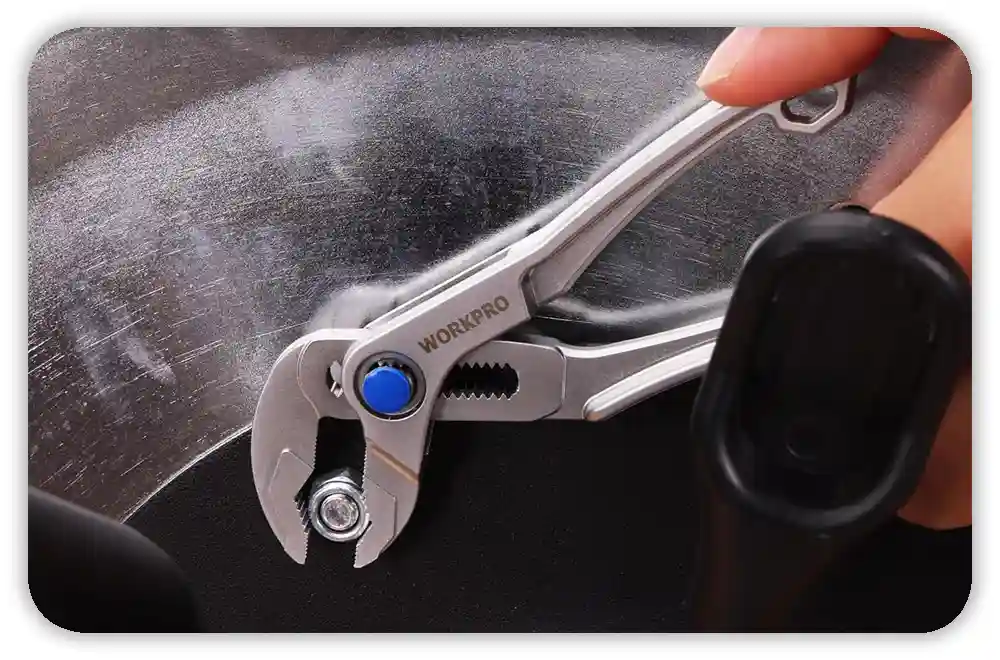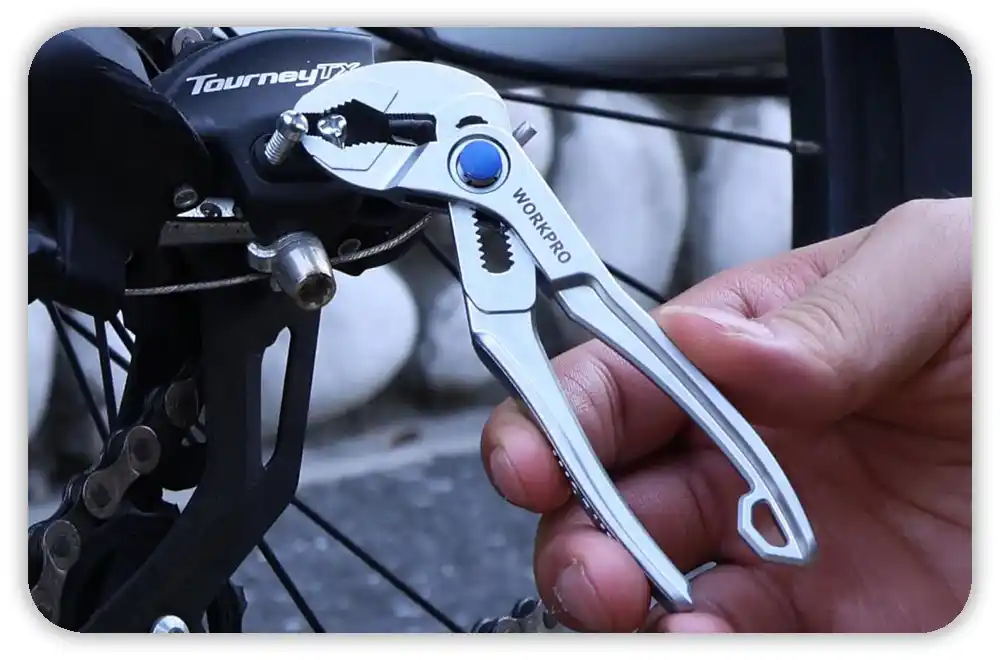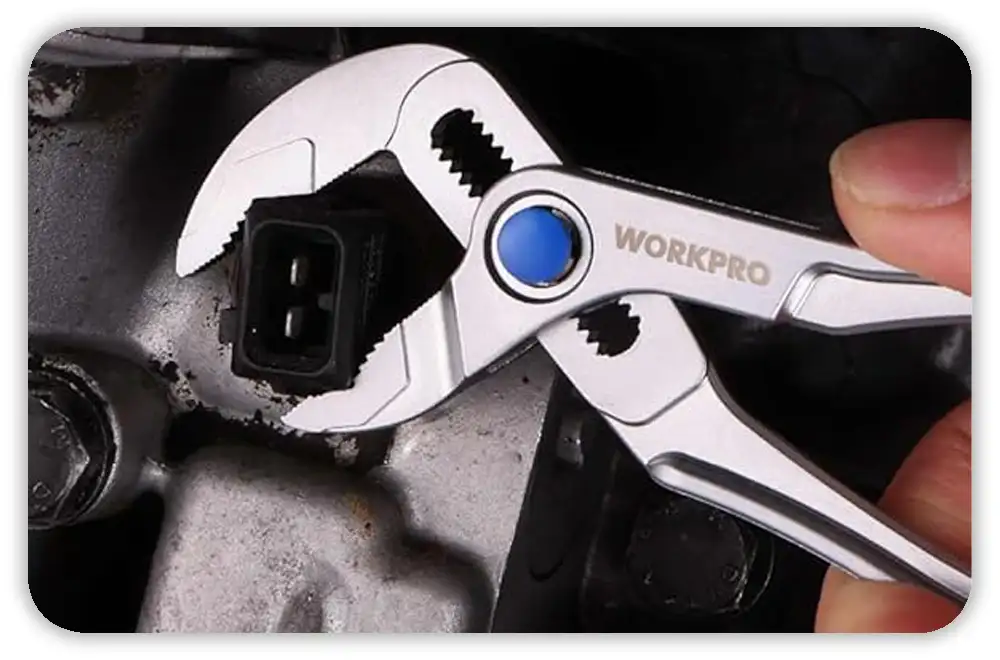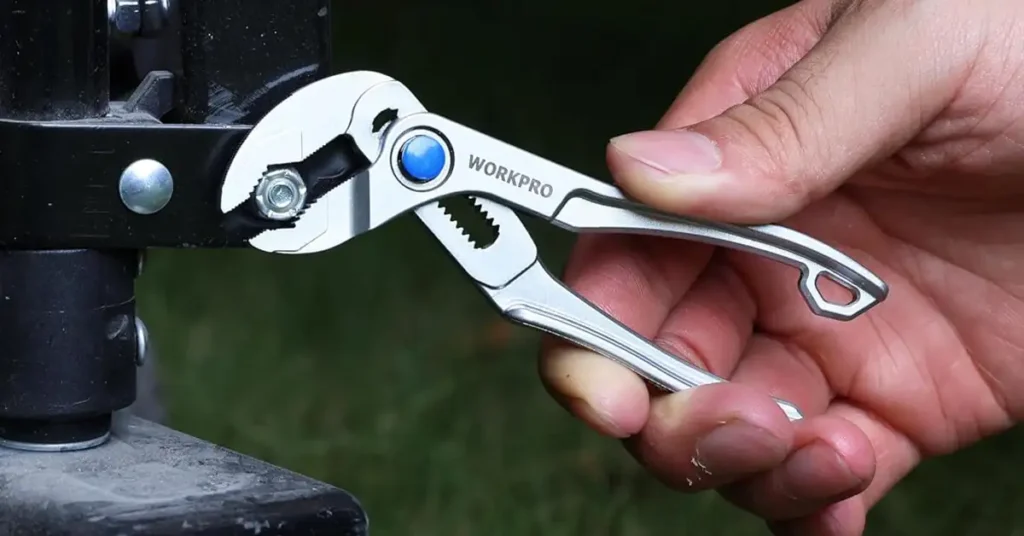If you’ve ever grabbed your pliers and felt them wobble, you know the struggle. It makes gripping anything a fight. I’ve run into this many times in my own garage. The good news? Fixing loose pliers is quick and easy once you know what to look for.
Table of Contents
What Causes Pliers to Get Loose
Over time, pliers lose their snug fit for a few simple reasons. I learned these the hard way after years of fixing tools for myself and friends.

- Normal wear: Metal-on-metal movement slowly widens the pivot.
- Rust: In damp garages or coastal states, rust creeps in fast.
- Lack of oil: Dry joints grind down faster.
- Soft rivets: Cheap pliers use weak metal that loosens over time.
I’ve noticed brands like Milwaukee and DeWalt hold up well. They use tight, machined pivots that stay solid. Craftsman and Kobalt are also good since you can replace the bolt if needed. But low-cost brands? Once that rivet loosens, they’re done.
Safety First
Before fixing anything, make sure you’re working safely. I learned early on that a quick job can still go wrong if you rush it.
- Wear safety glasses when using a hammer or punch.
- Use a sturdy workbench with good lighting.
- Keep oils and sprays stored safely.
- If the pliers are cracked or badly rusted, toss them. They’re not worth the risk.
Tools You’ll Need

You don’t need much for this fix. Here’s what I keep ready in my toolbox:
- Small ball-peen hammer
- Flat screwdriver or punch
- Bench vise
- WD-40 or penetrating oil
- Fine sandpaper or small file
- Light oil or grease
- (Optional) Bolt and locknut kit
Most of this stuff you already have if you do any kind of repair work.
Step-by-Step: How to Fix Loose Pliers
I’ve used this same method for years. It works on everything from small needle-nose pliers to heavy lineman’s tools.
1. Clean the Pivot
Spray a bit of WD-40 or any penetrating oil around the joint.
Move the handles back and forth to loosen the grime.
Wipe everything clean with a rag.
If there’s light rust, sand it off gently. I use 400-grit sandpaper.
2. Tighten the Rivet or Bolt
This is where the fix happens.
- For riveted pliers: Rest the joint on your vise or a solid surface.
Tap the rivet lightly with a hammer. Go slow and check the movement after each tap. - For bolted pliers: Tighten the bolt with a screwdriver or hex key.
Add a lock washer or a dab of thread locker so it doesn’t loosen again.
Stop tightening once the joint feels snug but still moves easily.
3. Test the Motion
Open and close the pliers.
They should move smoothly without any side play.
If they feel too stiff, add a drop of oil and work them back and forth.
Fixes for Different Types of Pliers

Different pliers need small tweaks. Here’s what I’ve learned:
- Slip-joint pliers: Check the slot and pin. If the edges are rough, file them smooth.
- Needle-nose or lineman’s pliers: If the jaws are off-center, press them gently in a vise. Don’t hammer them — that ruins the alignment.
- Locking pliers (Vise-Grips): Tighten the adjustment screw. If they still slip, the spring inside might be worn. I replaced mine once and it worked like new.
When to Replace Instead of Repair
Not every pair is worth saving. I’ve had tools so worn out that no fix could help. Replace your pliers if:
- The pivot hole is oval or cracked.
- The handles are bent or peeling.
- Rust goes deeper than the surface.
Many brands in the U.S. — like Channellock, Klein, and DeWalt — offer lifetime warranties. I’ve swapped a few that way and never had trouble.
How to Keep Your Pliers Tight
After you’ve fixed them, a little care keeps them in shape for years. Here’s what works best for me:
- Wipe off moisture after every use.
- Oil the pivot once a month.
- Store in a dry spot — not a damp drawer.
- Drop a few silica gel packs in your toolbox if you live in a humid state like Florida or Louisiana.
A few minutes of care saves you from doing this repair again soon.
Final Thoughts
Learning how to fix loose pliers has saved me a lot of frustration — and a few good tools. Once you understand how the joint works, it’s easy to bring old pliers back to life. Keep them clean, oiled, and stored dry. They’ll last for years and work like the day you bought them.
FAQs on How to Fix Loose Pliers
Why do pliers get loose over time?
Pliers loosen when the pivot joint wears down or rust builds up. Regular cleaning and light oiling help keep them tight and smooth.
How can I tighten loose pliers at home?
Place the pivot on a solid surface and tap it gently with a hammer. Add a drop of oil, then test until the joint moves smoothly.
Can I fix pliers without a vise?
Yes. You can use a hard surface like a steel block or an anvil. Just tap lightly and check often so you don’t overtighten the rivet.
When should I replace instead of repair pliers?
Replace pliers if the pivot is cracked, rusted deep, or the handles are bent. If they fail basic grip strength, they’re unsafe to use.
How do I prevent pliers from getting loose again?
Wipe them dry after use, add oil monthly, and store them in a dry place. Use silica packs in your toolbox to control moisture.

